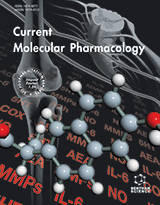Abstract
Prostaglandin E2 is known to be a potent metabolite in bone biology. Its effects are mediated via four receptor subtypes with different properties, effects and mechanisms of action. The EP2 and EP4 receptors have been extensively investigated as bone anabolic therapy targets in the literature. The aim of this review was to analyse the available evidence supporting the use of selective agonists for those receptors for anabolic bone application purposes. Although several studies report on the presence of the EP2 receptor in several cell types, efforts to directly confirm the presence of this receptor in human bone cells have not been successful. The EP4 receptor however has been identified in human bone cells and its significant role in bone biology has been demonstrated with the use of selective agonists, antagonists and transgenic small animals. The use of selective EP4 agonists reversed established osteoporotic changes, enhanced the boneimplant interface strength and was shown to have a synergistic effect when used with other bone cell targeting pharmacological agents such as BMP-2 and bisphosphonates. Further elucidation of the side-effect profile of prostanoid and non-prostanoid agonists is required for these agents to proceed towards clinical applications.
Keywords: Prostaglandin, EP4, PGE2, bone biology, agonists, osteoporosis
Current Molecular Pharmacology
Title:Prostaglandin E2 Receptors as Potential Bone Anabolic Targets – Selective EP4 Receptor Agonists
Volume: 5
Author(s): Joseph Pagkalos, Andreas Leonidou, Mohammed As-Sultany, Manolis Heliotis, Athanasios Mantalaris and Eleftherios Tsiridis
Affiliation:
Keywords: Prostaglandin, EP4, PGE2, bone biology, agonists, osteoporosis
Abstract: Prostaglandin E2 is known to be a potent metabolite in bone biology. Its effects are mediated via four receptor subtypes with different properties, effects and mechanisms of action. The EP2 and EP4 receptors have been extensively investigated as bone anabolic therapy targets in the literature. The aim of this review was to analyse the available evidence supporting the use of selective agonists for those receptors for anabolic bone application purposes. Although several studies report on the presence of the EP2 receptor in several cell types, efforts to directly confirm the presence of this receptor in human bone cells have not been successful. The EP4 receptor however has been identified in human bone cells and its significant role in bone biology has been demonstrated with the use of selective agonists, antagonists and transgenic small animals. The use of selective EP4 agonists reversed established osteoporotic changes, enhanced the boneimplant interface strength and was shown to have a synergistic effect when used with other bone cell targeting pharmacological agents such as BMP-2 and bisphosphonates. Further elucidation of the side-effect profile of prostanoid and non-prostanoid agonists is required for these agents to proceed towards clinical applications.
Export Options
About this article
Cite this article as:
Pagkalos Joseph, Leonidou Andreas, As-Sultany Mohammed, Heliotis Manolis, Mantalaris Athanasios and Tsiridis Eleftherios, Prostaglandin E2 Receptors as Potential Bone Anabolic Targets – Selective EP4 Receptor Agonists, Current Molecular Pharmacology 2012; 5 (2) . https://dx.doi.org/10.2174/1874467211205020174
| DOI https://dx.doi.org/10.2174/1874467211205020174 |
Print ISSN 1874-4672 |
| Publisher Name Bentham Science Publisher |
Online ISSN 1874-4702 |
 13
13
- Author Guidelines
- Bentham Author Support Services (BASS)
- Graphical Abstracts
- Fabricating and Stating False Information
- Research Misconduct
- Post Publication Discussions and Corrections
- Publishing Ethics and Rectitude
- Increase Visibility of Your Article
- Archiving Policies
- Peer Review Workflow
- Order Your Article Before Print
- Promote Your Article
- Manuscript Transfer Facility
- Editorial Policies
- Allegations from Whistleblowers
- Announcements
Related Articles
-
Fluparoxan: A Comprehensive Review of its Discovery, Adrenergic and CNS Activity and Treatment of Cognitive Dysfunction in Central Neurodegenerative Diseases
Mini-Reviews in Medicinal Chemistry Role of ARBs in the Blood Hypertension Therapy and Prevention of Cardiovascular Events
Current Drug Targets Bisthiourea Derivatives of Dipeptide Conjugated Benzo[d]isoxazole as a New Class of Therapeutics: Synthesis and Molecular Docking Studies
Anti-Inflammatory & Anti-Allergy Agents in Medicinal Chemistry Impact of Sitagliptin on Non-diabetic Covid-19 Patients
Current Molecular Pharmacology Involvement of Leukotriene Pathway in the Pathogenesis of Ischemia- Reperfusion Injury and Septic and Non-Septic Shock
Current Vascular Pharmacology Angiotensin Converting Enzyme Inhibitory Peptides Derived from Food Proteins: Biochemistry, Bioactivity and Production
Current Pharmaceutical Design Systematic Review on Infusion Reactions Associated with Chemotherapies and Monoclonal Antibodies for Metastatic Colorectal Cancer
Current Clinical Pharmacology Medico-Legal Evaluation of Fatal Perinatal Asphyxia
Current Pediatric Reviews Role of Nicotinic Acetylcholine Receptors in Cardiovascular Physiology and Pathophysiology: Current Trends and Perspectives
Current Vascular Pharmacology The Renin-Angiotensin System in the Mammalian Central Nervous System
Current Protein & Peptide Science A Walk in Nature: Sesquiterpene Lactones as Multi-Target Agents Involved in Inflammatory Pathways
Current Medicinal Chemistry Magnetic Digital Microfluidics for Point-of-Care Testing: Where Are We Now?
Current Medicinal Chemistry Importance of Snake Venom Metalloproteinases in Cell Biology: Effects on Platelets,Inflammatory and Endothelial Cells
Current Pharmaceutical Design Genetically Engineered Elastin-based Biomaterials for Biomedical Applications
Current Medicinal Chemistry Monoamine Receptors in the Regulation of Feeding Behaviour and Energy Balance
CNS & Neurological Disorders - Drug Targets Pleiotropic, Cardioprotective Effects of Omega-3 Polyunsaturated Fatty Acids
Mini-Reviews in Medicinal Chemistry Ablation of TRPV1 Elevates Nocturnal Blood Pressure in Western Diet-fed Mice
Current Hypertension Reviews Cardiovascular Diseases in Pregnancy - A Brief Overview
Current Cardiology Reviews What Restricts the Clinical Use of Nicotinic Acid?
Current Vascular Pharmacology The Role of Pro-Inflammatory Molecules and Pharmacological Agents in Acute Pancreatitis and Sepsis
Inflammation & Allergy - Drug Targets (Discontinued)


























